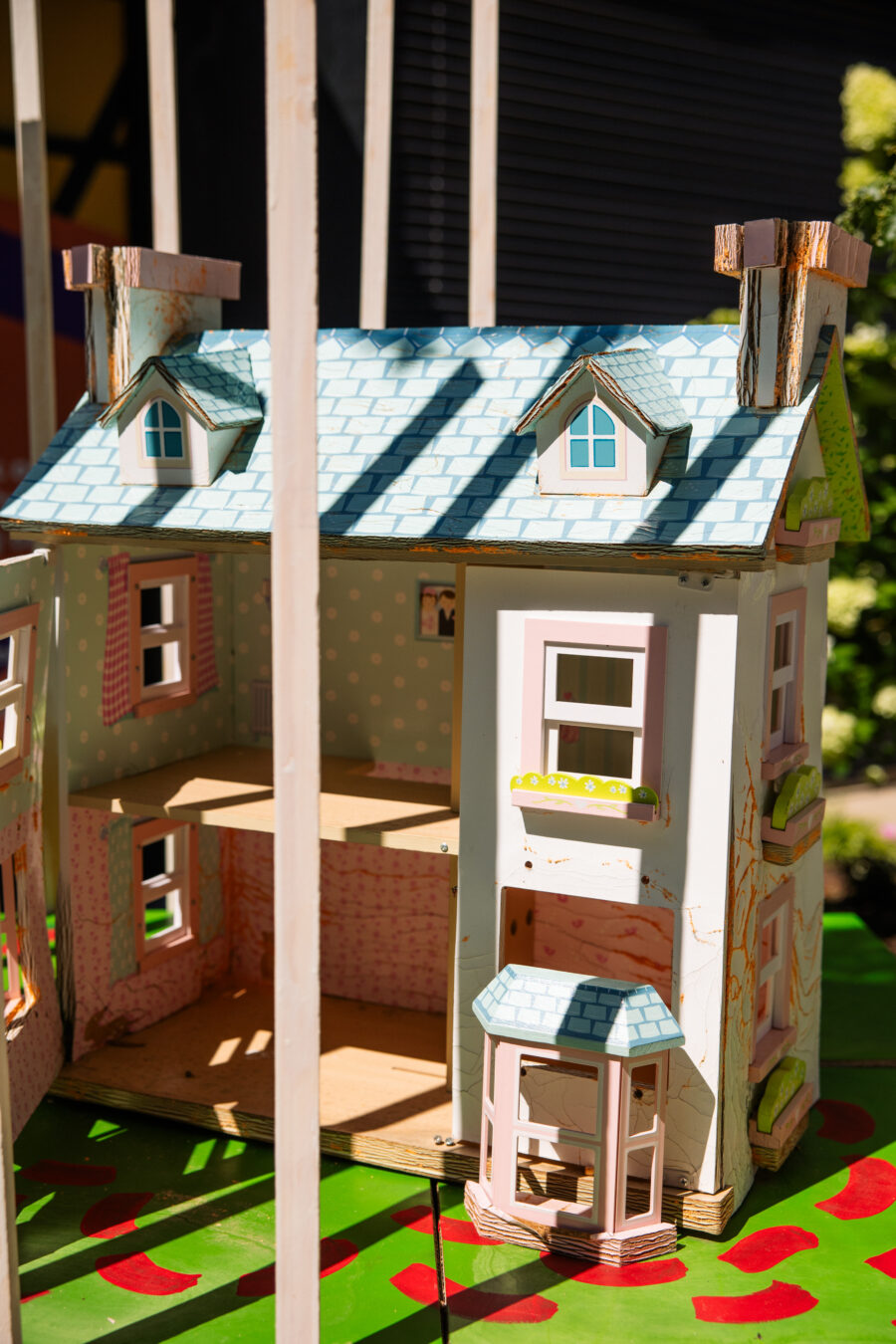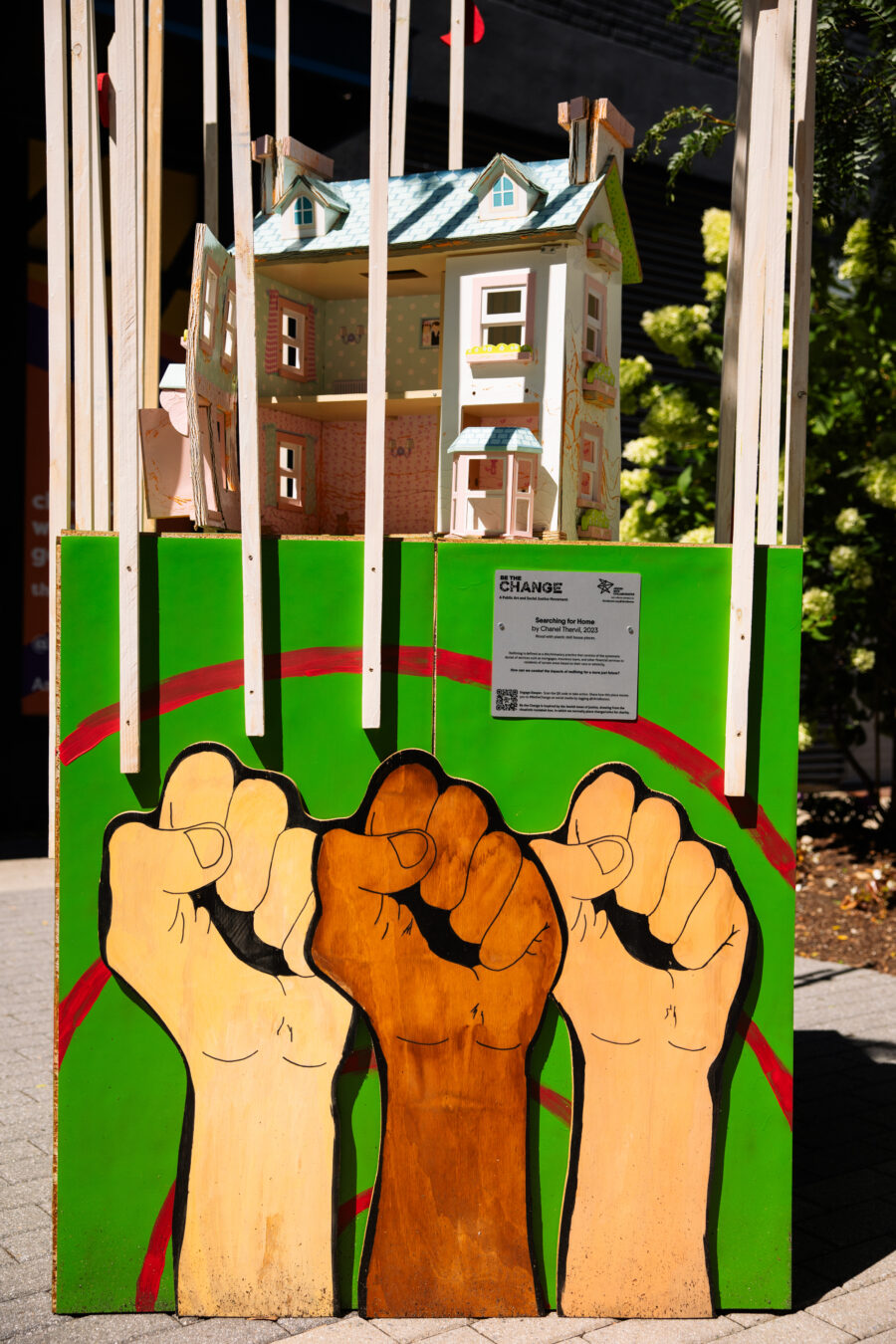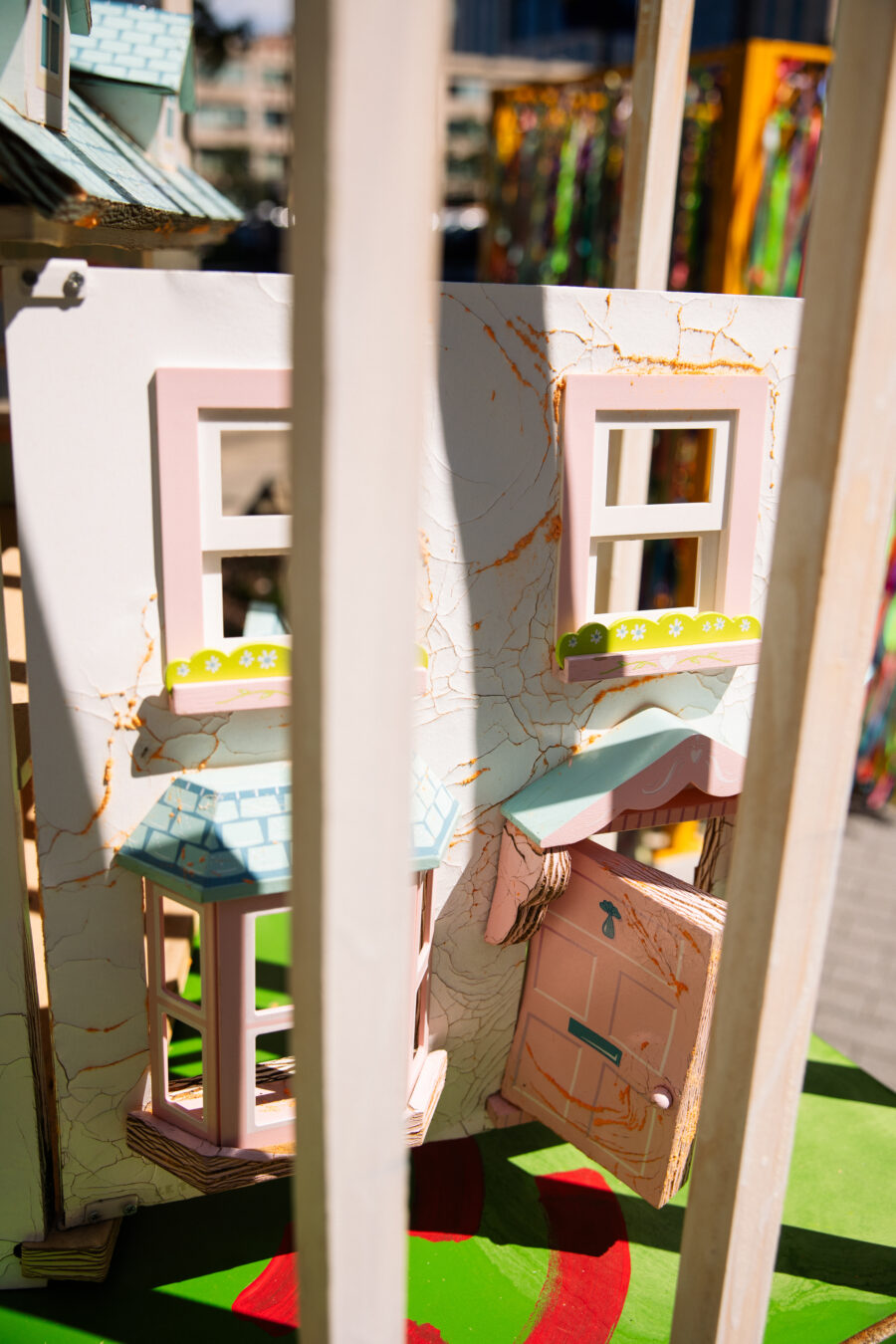Addressing The Impact of Redlining Through Public Art
Published Jul 25, 2023

When thinking of the American dream, you often picture a house with a white picket fence.
In this sculpture, a white picket fence extends beyond the roof surrounding a house, acting as a barrier to entry. “Searching for Home” confronts the discriminatory practice of redlining, portraying a symbolic tension between redlining and homeownership.
What is Redlining?
Redlining can be defined as a discriminatory practice that consists of the systematic denial of services such as mortgages, insurance loans, and other financial services to residents of certain areas based on their race or ethnicity.
Thervil’s sculpture eloquently captures the complex narrative of redlining’s impact on homeownership. The juxtaposition of the quintessential American dream with the restrictive white picket fence speaks to the systemic denial of financial services based on race or ethnicity. The butterflies, representing hope, navigate the barriers imposed by red lines, emphasizing the resilience of marginalized communities in the face of adversity. The base features raised fists of various skin tones, embodying solidarity against targeted discrimination.
By bringing attention to redlining, the sculpture prompts reflection on systemic inequalities and inspires action for a more just future. Inspired by her Boston homeownership journey, Chanel Thervil’s piece is a potent representation of the American dream.
Be the Change:
- Talk to your legislators and tell them to support more homes with Abundant Housing MA.
- Learn more about the impacts of redlining in Boston with Harvard’s School of Public Health.



Hear From the Artist:
Delve into Chanel Thervil’s narrative about redlining, home, and the right to thrive; hear her perspective about the power of art as a tool for social change; hear about how her cultural background and personal experiences shape her art, and explore concrete actions you can take to be part of the change.
JArts’ mission is to curate, celebrate, and build community around the diverse world of Jewish arts, culture, and creative expression. Our vision is of a more connected, engaged, and tolerant world inspired by Jewish arts and culture.
Reflections
-
1.
How does the visual representation of the white picket fence rising beyond the roof of the house in the sculpture symbolize the barriers and challenges faced by marginalized communities in accessing homeownership? How does this imagery contribute to the overall message about the impact of redlining on the American dream?
-
2.
The inclusion of butterflies as a symbol of hope and red lines in different directions adds complexity to the sculpture’s narrative. How do you interpret the relationship between hope and the ongoing effects of redlining?
-
3.
The raised fists of various skin tones in the base of the sculpture represent solidarity and the fight for access despite being targeted. How does this imagery resonate with the ongoing struggle against systemic discrimination? How does the sculpture engage viewers in a dialogue about the importance of addressing environmental racism and its historical impact on communities like those in Greater Boston?
Want more?
Get curated JewishArts.org content in your inbox


